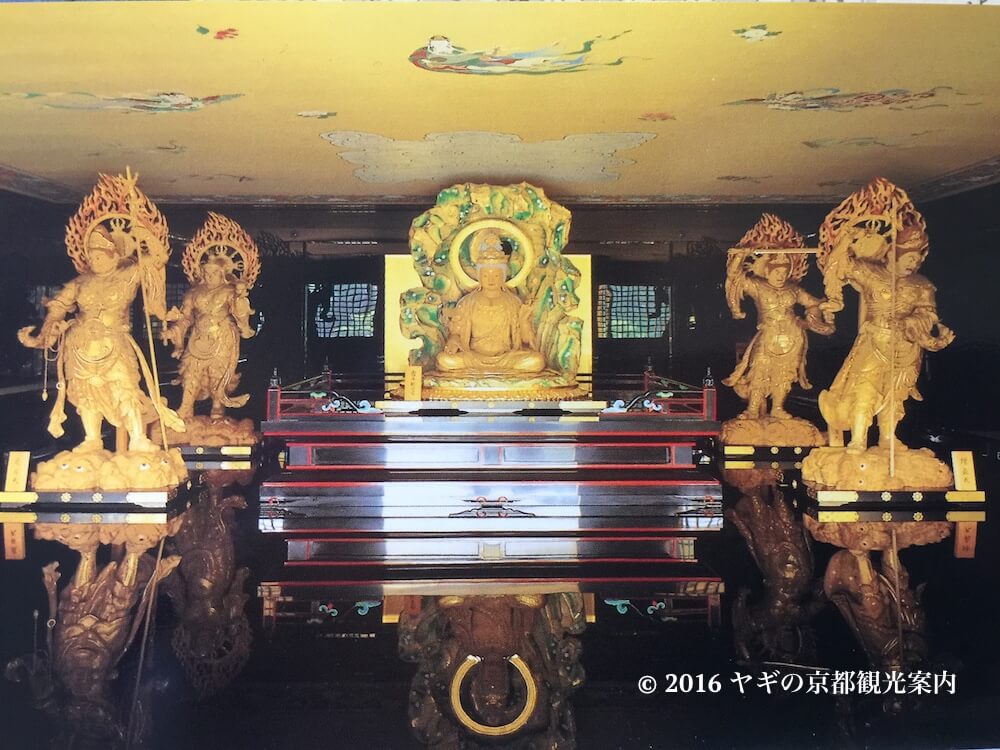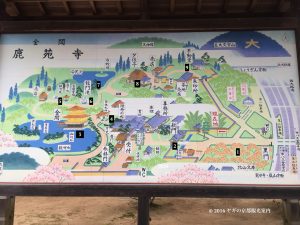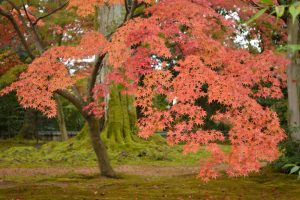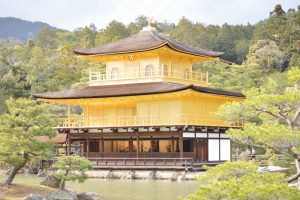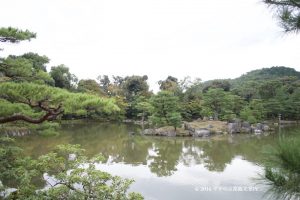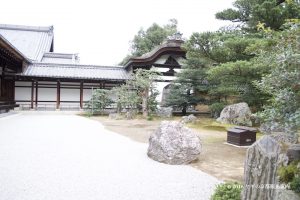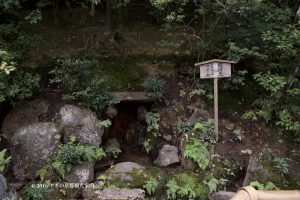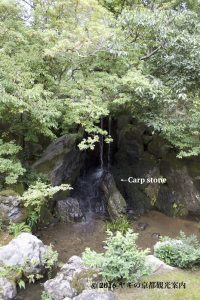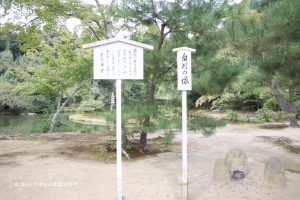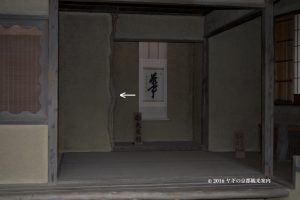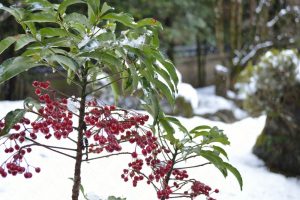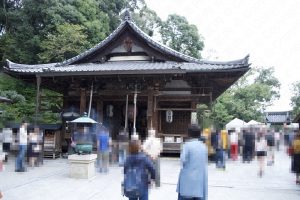THE GIST OF THIS ARTICLE
- Page 1 Introduction, About Kinkakuji, the golden pavilion (Shariden), the 1st floor.
- Page 2 The 2nd floor, the 3rd floor, the way to admire Sahriden
- Page 3 The prolific garden, night illumination on post card
- Page 4 Other Must-sees
- Page 5 Autume leaves and snow, access, etc.
The following is the contents of this article.
Other Must-sees
Map

Click to enlarge.
An approach to “Shariden”, the golden pavilion
An approach of Kinkakuji. (1 in the map) It is a prelude to “Shariden”, the golden pavilion. We have many maple trees along it.
In autumn time, we can admire one of the most beautiful autumn colors in Kyoto.
Five Commandments
At the front gate (2 in the map), “Five Commandments of Kinkakuji”.
- You shall not kill anything which has life.
- You shall not want anything you are not given.
- You shall not commit adultery.
- You shall not tell lies.
- You shall not indulge in Sake.
“Shariden”, the golden pavilion
3 in the map
“Kyo-ko-chi” pond (鏡湖池)
A pond located in front of Shariden. (3 in the map) It makes “Shakkei” of the mt. Kinugasa and even Shariden. “Shakkei” is a technique of Japanese traditional garden building. It “borrows” the scenery behind the garden. A good example of fine garden of Kitayama period.
The Dry garden (方丈庭園)
It is an underrated Karesansui garden in Kinkakuji temple. (4 in the map)Many visitors pay scarce attention to it. In the north side of it, there is a ship shaped pine tree called “Riku-syu-no-matsu (The pine-tree ship on the ground). This garden belongs to a Hojo, the main hall of Rokuonji temple.
Ginga sui (銀河水)
Ashikaga Yoshimitsu used to draw water for tea ceremony from the small well. (5 in the map)
Ryumon no Taki 龍門の滝
The cascade was named after an old Chinese anecdote: A carp crawling up to the top of the cascade became a dragon. In the East, dragon is Deityof water an rain though it means something evil in the West. The stone in front of the cascade means a carp. (6 in the map)
Antakumin 安民沢
There used to be a villa of the Saionjis. Now we can see a small pagoda and satues of Jizo, the Buddhist deity who saves people in suffer.(7 in the map)
You ka tei (夕佳亭)
“Yuka-tei” means “The hut in which we can have a good view in the twilight”.(8 in the map)
The “Tokobashira (Indicated by arrow in the 1st picture)” made of Nanten tree indicated in the picture is so rare because Nanten has always thin tree (The tree in the 2nd picture).
Fudo-doh (不動堂)
The oldest building in Kinkakuji. It was built in the 16th century. Acla (The deity in Shoigon traditon) is enshrined.(9 in the map)

